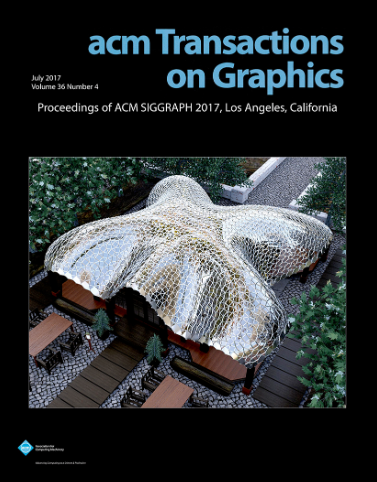Creating LEGO Figurines from Single Images
IF 7.8
1区 计算机科学
Q1 COMPUTER SCIENCE, SOFTWARE ENGINEERING
引用次数: 0
Abstract
This paper presents a computational pipeline for creating personalized, physical LEGO ®1 figurines from user-input portrait photos. The generated figurine is an assembly of coherently-connected LEGO ® bricks detailed with uv-printed decals, capturing prominent features such as hairstyle, clothing style, and garment color, and also intricate details such as logos, text, and patterns. This task is non-trivial, due to the substantial domain gap between unconstrained user photos and the stylistically-consistent LEGO ® figurine models. To ensure assemble-ability by LEGO ® bricks while capturing prominent features and intricate details, we design a three-stage pipeline: (i) we formulate a CLIP-guided retrieval approach to connect the domains of user photos and LEGO ® figurines, then output physically-assemble-able LEGO ® figurines with decals excluded; (ii) we then synthesize decals on the figurines via a symmetric U-Nets architecture conditioned on appearance features extracted from user photos; and (iii) we next reproject and uv-print the decals on associated LEGO ® bricks for physical model production. We evaluate the effectiveness of our method against eight hundred expert-designed figurines, using a comprehensive set of metrics, which include a novel GPT-4V-based evaluation metric, demonstrating superior performance of our method in visual quality and resemblance to input photos. Also, we show our method's robustness by generating LEGO ® figurines from diverse inputs and physically fabricating and assembling several of them.根据单张图片制作乐高塑像
本文介绍了利用用户输入的肖像照片制作个性化实体乐高®1 塑像的计算流程。生成的塑像是由连贯连接的乐高®砖块组装而成,细节部分采用 UV 印刷贴花,捕捉了发型、服装款式和服装颜色等显著特征,以及徽标、文字和图案等复杂细节。由于无约束的用户照片与风格一致的乐高® 塑像模型之间存在巨大的领域差距,因此这项任务并不轻松。为了确保乐高®积木的可装配性,同时捕捉到突出的特征和复杂的细节,我们设计了一个三阶段流水线:(i) 我们制定了一种以 CLIP 为指导的检索方法来连接用户照片和乐高® 塑像的领域,然后输出不含贴花的可物理组装的乐高® 塑像;(ii) 然后,我们根据从用户照片中提取的外观特征,通过对称 U-Nets 架构在塑像上合成贴花;(iii) 接下来,我们在相关的乐高® 砖上重新投影和uv-打印贴花,以制作物理模型。我们使用一套全面的指标(包括基于 GPT-4V 的新颖评估指标)评估了我们的方法与八百个专家设计的小雕像的效果,结果表明我们的方法在视觉质量和与输入照片的相似度方面表现出色。此外,我们还根据不同的输入信息生成乐高®小雕像,并实际制作和组装了其中几个,从而展示了我们方法的鲁棒性。
本文章由计算机程序翻译,如有差异,请以英文原文为准。
求助全文
约1分钟内获得全文
求助全文
来源期刊

ACM Transactions on Graphics
工程技术-计算机:软件工程
CiteScore
14.30
自引率
25.80%
发文量
193
审稿时长
12 months
期刊介绍:
ACM Transactions on Graphics (TOG) is a peer-reviewed scientific journal that aims to disseminate the latest findings of note in the field of computer graphics. It has been published since 1982 by the Association for Computing Machinery. Starting in 2003, all papers accepted for presentation at the annual SIGGRAPH conference are printed in a special summer issue of the journal.
文献相关原料
| 公司名称 | 产品信息 | 采购帮参考价格 |
|---|
 求助内容:
求助内容: 应助结果提醒方式:
应助结果提醒方式:


